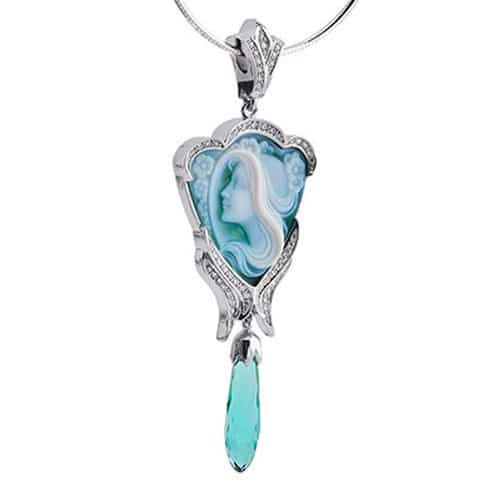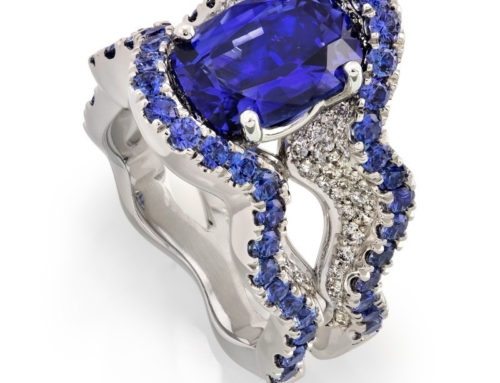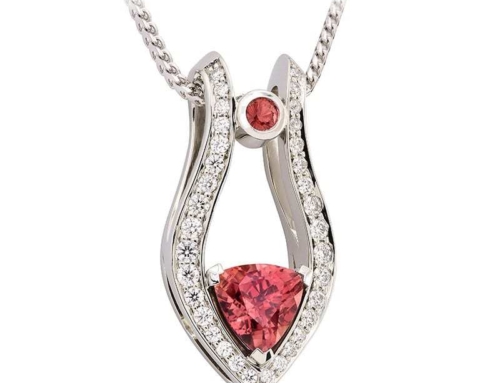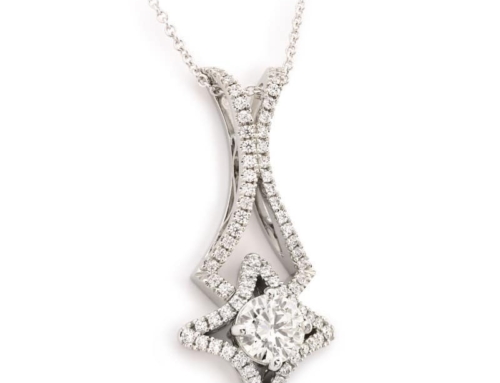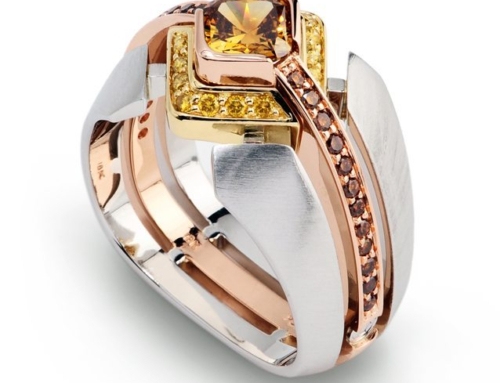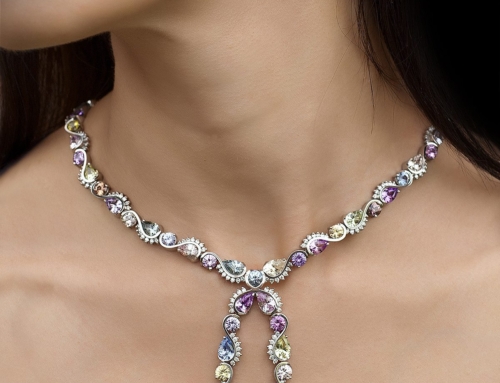This beautiful cameo jewelry pendant from our Deco Collection features a hand-carved Green Agate Cameo and a 7.63-carat Tourmaline Briolette. Sixty-four round brilliant cut Diamonds accent the cameo totaling 0.57 carats. Randy Coffin designed the pendant. It features a Rosalie cameo which was hand carved by the German sculpting master, Andreas Pauly. Rosalie cameos are known for depicting the image of a woman surrounded by flowers.
History of Cameo Jewelry
Historically, cameos were favored by royalty. Both Queen Elizabeth and Catherine The Great loved to wear cameo jewelry. However, Queen Victoria is credited with making them popular. They were worn as pins or pendants on a black satin ribbon. Italian carvers began using sea shells to create cameo jewelry around 1805. By the Victorian Era, carvers realized that seashells were not only inexpensive, they were also easy to carve. These seashell cameos were considered less formal and were worn during the day. For a more formal cameo, carvers would turn to stones such as agate, onyx or sardonyx. Victorian women prized cameos carved in their likeness. While commissioned portraits were very popular, portraits of an anonymous woman were also in high demand. Carvers could create such images in shell or lava and sell them quickly as these were favored by tourists.
Cameos have not always been worn by women. Throughout history, they have also been worn by males. The birthplace of the cameo was approximately 300 B.C. in Egypt. However, people have been carving in stone as far back as 15,000 BC. Figures carved into the rock called petroglyphs were used to document significant events and communicate information. In ancient times, people also used cameos to depict an ethic or moral or make a statement about their faith or loyalties.

